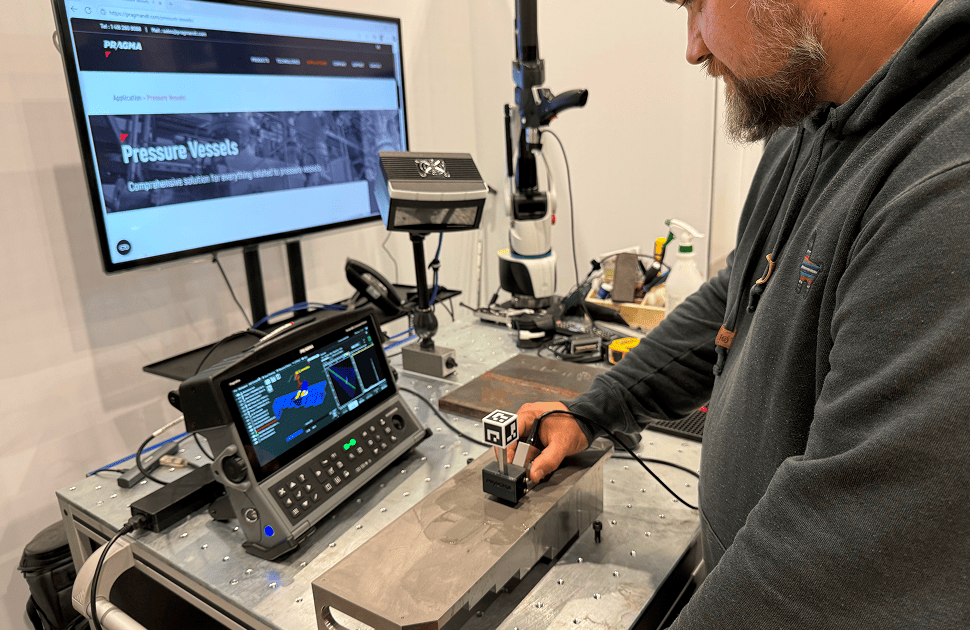In the ever-evolving field of non-destructive testing (NDT), the demand for more precise, reliable, and efficient inspection tools continues to grow. PRAGMA NDT, known for its advanced portable and robotic systems, has introduced the Vision Encoder, a breakthrough innovation that could reshape how inspections are performed in the field.
What is the Vision Encoder?
The Vision Encoder is a 3D position encoder with six degrees of freedom (6 DOF). Unlike traditional encoders that capture only linear or orthogonal (XY) movements, this system records both position (x, y, z) and orientation (pitch, yaw, roll) in real time, allowing a free-form 3D movement to follow the part geometry. This provides inspectors with a complete picture of where the probe is located — and how it is oriented — throughout the inspection process.
Designed for Practical NDT
Engineered with field conditions in mind, the Vision Encoder is optimized for practicality and integration. It can be seamlessly paired with PRAGMA’s modular platforms, including the PragmaFlex instrument and Pragma3D software, ensuring compatibility across different workflows. The emphasis is on usability: inspectors can adopt the technology without having to overhaul their existing inspection routines.
A Step Toward NDE 4.0
The Vision Encoder contributes to the industry’s push toward NDE 4.0, where automation, digitalization, and data fusion are central. Through collaborations with partners such as Hexagon, PRAGMA was already enabling integration with advanced metrology tools like Absolute Arms and laser trackers. This convergence allows flaws to be not only detected, but also accurately located in 3D space, strengthening the link between inspection data and engineering decision-making. The Vision Encoder complements the solutions port folio.
Key Advantages for Inspectors
- Full 6DOF tracking: simultaneous position and orientation in 3D.
- High accuracy in defect localization and mapping.
- Seamless integration with PragmaFlex and Pragma3D,.
- Improved traceability and repeatability, critical for compliance and audits.
- Support for NDE 4.0 workflows, including digital data fusion.
Application in the Field: Aerospace Example
Consider the inspection of a composite aircraft fuselage panel — a component where even the smallest defect can have significant consequences. Traditionally, inspectors rely on manual encoders that track only linear motion, making it difficult to precisely document probe orientation across curved or contoured surfaces.
With the Vision Encoder, the inspector can quickly deploy using a tripod, succion cups or magnetic base, using an articulated arm to target the inspection area. The Vision Encoder’s camera captures both the probe’s exact position and orientation in 3D space as the scan progresses. This ensures that every area of the curved fuselage is correctly mapped and documented. It also ensures that proper overlay was used in the scanning passes, as most procedures call for. If a flaw is detected, its coordinates can be instantly correlated with a digital twin of the aircraft structure, allowing maintenance teams to locate and assess the defect with confidence.
This not only improves accuracy, but also saves time during both inspection and reporting — two critical factors in aerospace maintenance operations.
Looking Ahead
The introduction of the Vision Encoder underscores PRAGMA’s commitment to bridging the gap between inspection and metrology. By combining precise positioning with portable and robotic inspection systems, PRAGMA is contributing to a future where NDT is not only more accurate, but also more connected, efficient, and ready for the digital transformation of asset management.
Author: PRAGMA









